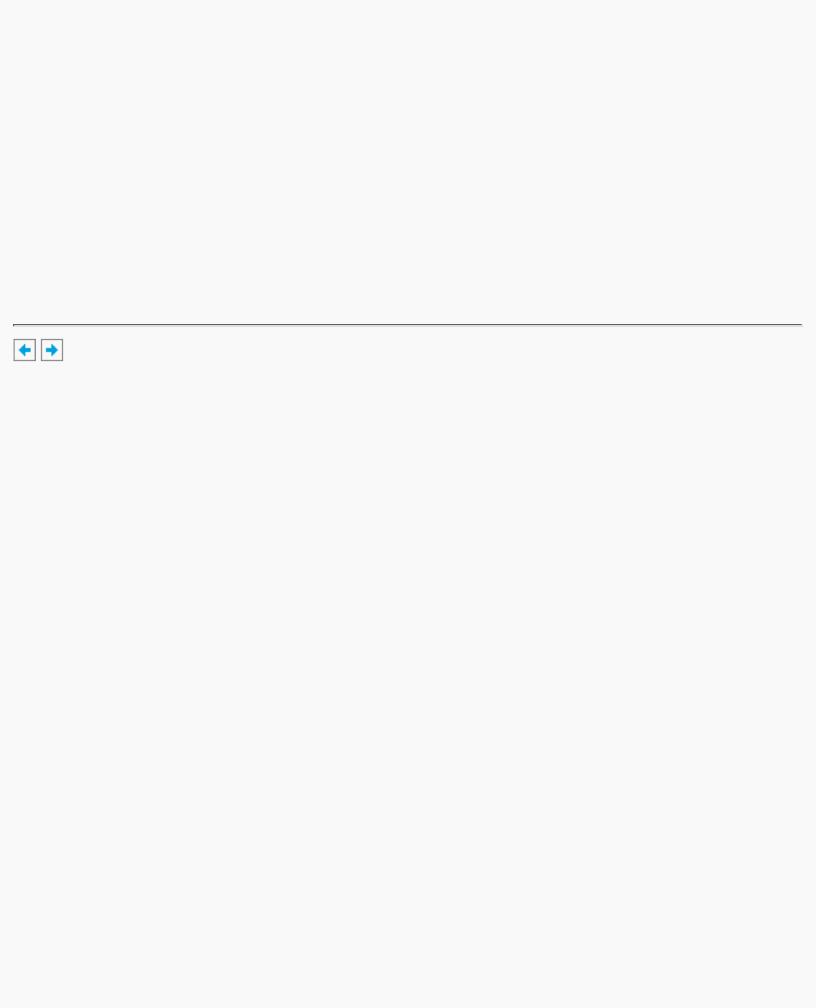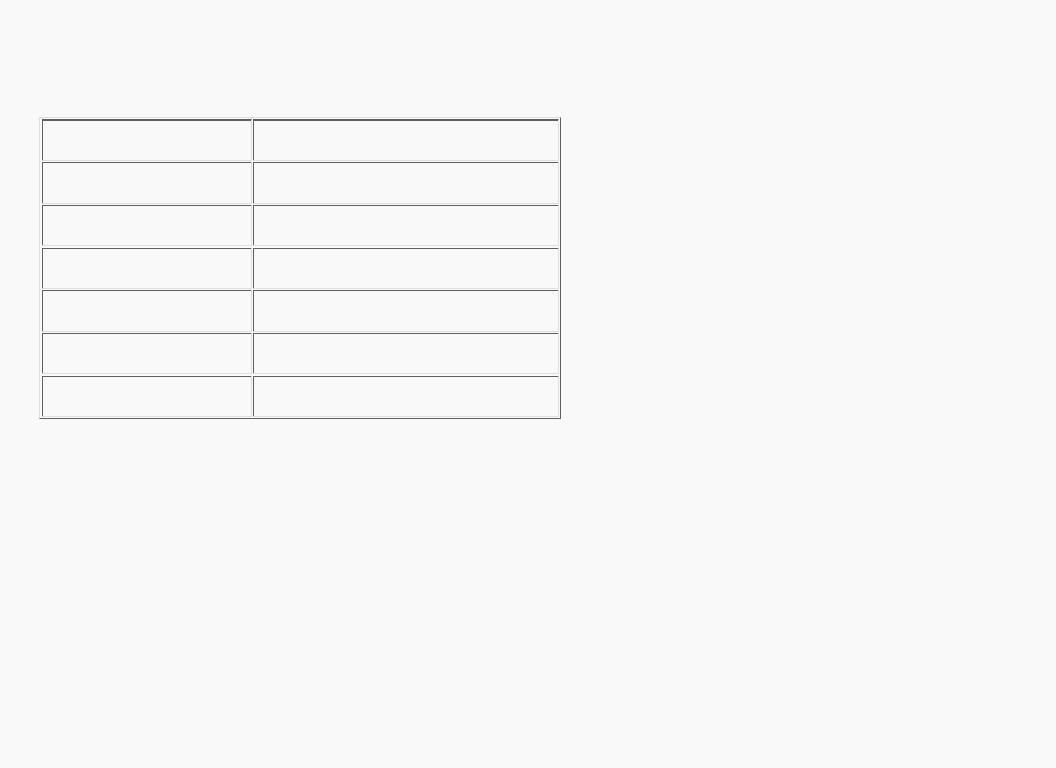
The Official Guide to Learning OpenGL, Version 1.1 (Redbook Second Edition)
.pdf
OpenGL Programming Guide (Addison-Wesley Publishing Company)
Using Markers in Feedback Mode
Feedback occurs after transformations, lighting, polygon culling, and interpretation of polygons by glPolygonMode(). It might also occur after polygons with more than three edges are broken up into triangles (if your particular OpenGL implementation renders polygons by performing this decomposition). Thus, it might be hard for you to recognize the primitives you drew in the feedback data you receive. To help parse the feedback data, call glPassThrough() as needed in your sequence of drawing commands to insert a marker. You might use the markers to separate the feedback values returned from different primitives, for example. This command causes GL_PASS_THROUGH_TOKEN to be written into the feedback array, followed by the floating-point value you pass in as an argument.
void glPassThrough(GLfloat token);
Inserts a marker into the stream of values written into the feedback array, if called in feedback mode. The marker consists of the code GL_PASS_THROUGH_TOKEN followed by a single floating-point value, token. This command has no effect when called outside of feedback mode.
Calling glPassThrough() between glBegin() and glEnd() generates a GL_INVALID_OPERATION error.
A Feedback Example
Example 13-7 demonstrates the use of feedback mode. This program draws a lit, three-dimensional scene in normal rendering mode. Then, feedback mode is entered, and the scene is redrawn. Since the program draws lit, untextured, three-dimensional objects, the type of feedback data is GL_3D_COLOR. Since RGBA mode is used, each unclipped vertex generates seven values for the feedback buffer: x, y, z, r, g, b, and a.
In feedback mode, the program draws two lines as part of a line strip and then inserts a pass-through marker. Next, a point is drawn at (-100.0, -100.0, -100.0), which falls outside the orthographic viewing volume and thus doesn't put any values into the feedback array. Finally, another pass-through marker is inserted, and another point is drawn.
Example 13-7 : Feedback Mode: feedback.c
#include <GL/gl.h> #include <GL/glu.h>
http://heron.cc.ukans.edu/ebt-bin/nph-dweb/dynaw...Generic__BookTextView/26954;cs=fullhtml;pt=24910 (22 of 26) [4/28/2000 9:47:33 PM]

OpenGL Programming Guide (Addison-Wesley Publishing Company)
#include <GL/glut.h> #include <stdlib.h> #include <stdio.h>
void init(void)
{
glEnable(GL_LIGHTING); glEnable(GL_LIGHT0);
}
void drawGeometry (GLenum mode)
{
glBegin (GL_LINE_STRIP); glNormal3f (0.0, 0.0, 1.0); glVertex3f (30.0, 30.0, 0.0); glVertex3f (50.0, 60.0, 0.0); glVertex3f (70.0, 40.0, 0.0); glEnd ();
if (mode == GL_FEEDBACK) glPassThrough (1.0);
glBegin (GL_POINTS);
glVertex3f (-100.0, -100.0, -100.0); /* will be clipped */ glEnd ();
if (mode == GL_FEEDBACK) glPassThrough (2.0);
glBegin (GL_POINTS); glNormal3f (0.0, 0.0, 1.0); glVertex3f (50.0, 50.0, 0.0); glEnd ();
}
void print3DcolorVertex (GLint size, GLint *count, GLfloat *buffer)
{
int i;
printf (" ");
for (i = 0; i < 7; i++) {
printf ("%4.2f ", buffer[size-(*count)]); *count = *count - 1;
}
printf ("\n");
}
void printBuffer(GLint size, GLfloat *buffer)
http://heron.cc.ukans.edu/ebt-bin/nph-dweb/dynaw...Generic__BookTextView/26954;cs=fullhtml;pt=24910 (23 of 26) [4/28/2000 9:47:33 PM]

OpenGL Programming Guide (Addison-Wesley Publishing Company)
{
GLint count; GLfloat token;
count = size; while (count) {
token = buffer[size-count]; count--; if (token == GL_PASS_THROUGH_TOKEN) {
printf ("GL_PASS_THROUGH_TOKEN\n"); printf (" %4.2f\n", buffer[size-count]); count--;
}
else if (token == GL_POINT_TOKEN) { printf ("GL_POINT_TOKEN\n");
print3DcolorVertex (size, &count, buffer);
}
else if (token == GL_LINE_TOKEN) { printf ("GL_LINE_TOKEN\n");
print3DcolorVertex (size, &count, buffer); print3DcolorVertex (size, &count, buffer);
}
else if (token == GL_LINE_RESET_TOKEN) { printf ("GL_LINE_RESET_TOKEN\n"); print3DcolorVertex (size, &count, buffer); print3DcolorVertex (size, &count, buffer);
}
}
}
void display(void)
{
GLfloat feedBuffer[1024]; GLint size;
glMatrixMode (GL_PROJECTION); glLoadIdentity ();
glOrtho (0.0, 100.0, 0.0, 100.0, 0.0, 1.0);
glClearColor (0.0, 0.0, 0.0, 0.0); glClear(GL_COLOR_BUFFER_BIT); drawGeometry (GL_RENDER);
glFeedbackBuffer (1024, GL_3D_COLOR, feedBuffer); (void) glRenderMode (GL_FEEDBACK);
drawGeometry (GL_FEEDBACK);
http://heron.cc.ukans.edu/ebt-bin/nph-dweb/dynaw...Generic__BookTextView/26954;cs=fullhtml;pt=24910 (24 of 26) [4/28/2000 9:47:33 PM]

OpenGL Programming Guide (Addison-Wesley Publishing Company)
size = glRenderMode (GL_RENDER); printBuffer (size, feedBuffer);
}
int main(int argc, char** argv)
{
glutInit(&argc, argv); glutInitDisplayMode(GLUT_SINGLE | GLUT_RGB); glutInitWindowSize (100, 100); glutInitWindowPosition (100, 100); glutCreateWindow(argv[0]);
init();
glutDisplayFunc(display);
glutMainLoop(); return 0;
}
Running this program generates the following output:
GL_LINE_RESET_TOKEN
30.00 30.00 0.00 0.84 0.84 0.84 1.00
50.00 60.00 0.00 0.84 0.84 0.84 1.00 GL_LINE_TOKEN
50.00 60.00 0.00 0.84 0.84 0.84 1.00
70.00 40.00 0.00 0.84 0.84 0.84 1.00 GL_PASS_THROUGH_TOKEN
1.00 GL_PASS_THROUGH_TOKEN 2.00
GL_POINT_TOKEN
50.00 50.00 0.00 0.84 0.84 0.84 1.00
Thus, the line strip drawn with these commands results in two primitives:
glBegin(GL_LINE_STRIP); glNormal3f (0.0, 0.0, 1.0); glVertex3f (30.0, 30.0, 0.0); glVertex3f (50.0, 60.0, 0.0); glVertex3f (70.0, 40.0, 0.0);
glEnd();
The first primitive begins with GL_LINE_RESET_TOKEN, which indicates that the primitive is a line segment and that the line stipple is reset. The second primitive begins with GL_LINE_TOKEN, so it's also a line segment, but the line stipple isn't reset and hence continues from where the previous line segment left off. Each of the two vertices for these lines generates seven values for the feedback array. Note that the RGBA values for all four vertices in these two lines are (0.84, 0.84, 0.84, 1.0), which is a very light gray color with the maximum alpha value. These color values are a result of the interaction of the surface normal and lighting parameters.
http://heron.cc.ukans.edu/ebt-bin/nph-dweb/dynaw...Generic__BookTextView/26954;cs=fullhtml;pt=24910 (25 of 26) [4/28/2000 9:47:33 PM]

OpenGL Programming Guide (Addison-Wesley Publishing Company)
Since no feedback data is generated between the first and second pass-through markers, you can deduce that any primitives drawn between the first two calls to glPassThrough() were clipped out of the viewing volume. Finally, the point at (50.0, 50.0, 0.0) is drawn, and its associated data is copied into the feedback array.
Note: In both feedback and selection modes, information on objects is returned prior to any fragment tests. Thus, objects that would not be drawn due to failure of the scissor, alpha, depth, or stencil tests may still have their data processed and returned in both feedback and selection modes.
Try This
Make changes to Example 13-7 and see how they affect the feedback values that are returned. For example, change the coordinate values of glOrtho(). Change the lighting variables, or eliminate lighting altogether and change the feedback type to GL_3D. Or add more primitives to see what other geometry (such as filled polygons) contributes to the feedback array.
OpenGL Programming Guide (Addison-Wesley Publishing Company)
http://heron.cc.ukans.edu/ebt-bin/nph-dweb/dynaw...Generic__BookTextView/26954;cs=fullhtml;pt=24910 (26 of 26) [4/28/2000 9:47:33 PM]

OpenGL Programming Guide (Addison-Wesley Publishing Company)
OpenGL Programming Guide (Addison-Wesley Publishing Company)
Chapter 14
Now That You Know
Chapter Objectives
This chapter doesn't have objectives in the same way that previous chapters do. It's simply a collection of topics that describe ideas you might find useful for your application. Some topics, such as error handling, don't fit into other categories, but are too short for an entire chapter.
OpenGL is kind of a bag of low-level tools; now that you know about those tools, you can use them to implement higher-level functions. This chapter presents several examples of such higher-level capabilities.
This chapter discusses a variety of techniques based on OpenGL commands that illustrate some of the not-so-obvious uses to which you can put these commands. The examples are in no particular order and aren't related to each other. The idea is to read the section headings and skip to the examples that you find interesting. For your convenience, the headings are listed and explained briefly here.
Note: Most of the examples in the rest of this guide are complete and can be compiled and run as is. In this chapter, however, there are no complete programs, and you have to do a bit of work on your own to make them run.
●"Error Handling" tells you how to check for OpenGL error conditions.
●"Which Version Am I Using?" describes how to find out details about the implementation, including the version number. This can be useful for writing applications that are backward compatible with earlier versions of OpenGL.
●"Extensions to the Standard" presents techniques to identify and use vendor-specific extensions to the OpenGL standard.
●"Cheesy Translucency" explains how to use polygon stippling to achieve translucency; this is particularly useful when you don't have blending hardware available.
●"An Easy Fade Effect" shows how to use polygon stippling to create the effect of a fade into the background.
●"Object Selection Using the Back Buffer" describes how to use the back buffer in a double-buffered system to handle simple object picking.
●"Cheap Image Transformation" discusses how to draw a distorted version of a bitmapped image by drawing each pixel as a quadrilateral.
●"Displaying Layers" explains how to display multiple different layers of materials and indicate where the materials overlap.
●"Antialiased Characters" describes how to draw smoother fonts.
http://heron.cc.ukans.edu/ebt-bin/nph-dweb/dynaweb/SGI_Developer/OpenGL_PG/@Generic__BookTextView/28086;cs=fullhtml;pt=26954 (1 of 22) [4/28/2000 9:49:00 PM]

OpenGL Programming Guide (Addison-Wesley Publishing Company)
●"Drawing Round Points" describes how to draw near-round points.
●"Interpolating Images" shows how to smoothly blend from one image to the another.
●"Making Decals" explains how to draw two images, where one is a sort of decal that should always appear on top of the other.
●"Drawing Filled, Concave Polygons Using the Stencil Buffer" tells you how to draw concave polygons, nonsimple polygons, and polygons with holes by using the stencil buffer.
●"Finding Interference Regions" describes how to determine where three-dimensional pieces overlap.
●"Shadows" describes how to draw shadows of lit objects.
●"Hidden-Line Removal" discusses how to draw a wireframe object with hidden lines removed by using the stencil buffer.
●"Texture-Mapping Applications" describes several clever uses for texture mapping, such as rotating and warping images.
●"Drawing Depth-Buffered Images" tells you how to combine images in a depth-buffered environment.
●"Dirichlet Domains" explains how to find the Dirichlet domain of a set of points using the depth buffer.
●"Life in the Stencil Buffer" explains how to implement the Game of Life using the stencil buffer.
●"Alternative Uses for glDrawPixels() and glCopyPixels()" describes how to use these two commands for such effects as fake video, airbrushing, and transposed images.
Error Handling
The truth is, your program will make mistakes. Use of error-handling routines are essential during development and are highly recommended for commercially released applications. (Unless you can give a 100% guarantee your program will never generate an OpenGL error condition. Get real!) OpenGL has simple error-handling routines for the base GL and GLU libraries.
When OpenGL detects an error (in either the base GL or GLU), it records a current error code. The command that caused the error is ignored, so it has no effect on OpenGL state or on the framebuffer contents. (If the error recorded was GL_OUT_OF_MEMORY, however, the results of the command are undefined.) Once recorded, the current error code isn't cleared - that is, additional errors aren't recorded - until you call the query command glGetError(), which returns the current error code. After you've queried and cleared the current error code, or if there's no error to begin with, glGetError() returns GL_NO_ERROR.
GLenum glGetError(void);
http://heron.cc.ukans.edu/ebt-bin/nph-dweb/dynaweb/SGI_Developer/OpenGL_PG/@Generic__BookTextView/28086;cs=fullhtml;pt=26954 (2 of 22) [4/28/2000 9:49:00 PM]

OpenGL Programming Guide (Addison-Wesley Publishing Company)
Returns the value of the error flag. When an error occurs in either the GL or GLU, the error flag is set to the appropriate error code value. If GL_NO_ERROR is returned, there has been no detectable error since the last call to glGetError(), or since the GL was initialized. No other errors are recorded until glGetError() is called, the error code is returned, and the flag is reset to GL_NO_ERROR.
It is strongly recommended that you call glGetError() at least once in each display() routine. Table 14-1 lists the basic defined OpenGL error codes.
Table 14-1 : OpenGL Error Codes
There are also thirty-seven GLU NURBS errors (with non-descriptive constant names, GLU_NURBS_ERROR1, GLU_NURBS_ERROR2, and so on), fourteen tessellator errors (GLU_TESS_MISSING_BEGIN_POLYGON, GLU_TESS_MISSING_END_POLYGON, GLU_TESS_MISSING_BEGIN_CONTOUR, GLU_TESS_MISSING_END_CONTOUR, GLU_TESS_COORD_TOO_LARGE, GLU_TESS_NEED_COMBINE_CALLBACK, and eight generically named GLU_TESS_ERROR*), and GLU_INCOMPATIBLE_GL_VERSION. Also, the GLU defines the error codes GLU_INVALID_ENUM, GLU_INVALID_VALUE, and GLU_OUT_OF_MEMORY, which have the same meaning as the related OpenGL codes.
To obtain a printable, descriptive string corresponding to either a GL or GLU error code, use the GLU routine gluErrorString().
const GLubyte* gluErrorString(GLenum errorCode);
Returns a pointer to a descriptive string that corresponds to the OpenGL or GLU error number passed in errorCode.
In Example 14-1, a simple error handling routine is shown.
Example 14-1 : Querying and Printing an Error
GLenum errCode;
const GLubyte *errString;
if ((errCode = glGetError()) != GL_NO_ERROR) {
http://heron.cc.ukans.edu/ebt-bin/nph-dweb/dynaweb/SGI_Developer/OpenGL_PG/@Generic__BookTextView/28086;cs=fullhtml;pt=26954 (3 of 22) [4/28/2000 9:49:00 PM]

OpenGL Programming Guide (Addison-Wesley Publishing Company)
errString = gluErrorString(errCode);
fprintf (stderr, "OpenGL Error: %s\n", errString);
}
Note: The string returned by gluErrorString() must not be altered or freed by the application.
Which Version Am I Using?
The portability of OpenGL applications is one of OpenGL's attractive features. However, new versions of OpenGL introduce new features, which may introduce backward compatibility problems. In addition, you may want your application to perform equally well on a variety of implementations. For example, you might make texture mapping the default rendering mode on one machine, but only have flat shading on another. You can use glGetString() to obtain release information about your OpenGL implementation.
const GLubyte* glGetString(GLenum name);
Returns a pointer to a string that describes an aspect of the OpenGL implementation. name can be one of the following: GL_VENDOR, GL_RENDERER, GL_VERSION, or GL_EXTENSIONS.
GL_VENDOR returns the name of the company responsible for the OpenGL implementation. GL_RENDERER returns an identifier of the renderer, which is usually the hardware platform. For more about GL_EXTENSIONS, see the next section, "Extensions to the Standard."
GL_VERSION returns a string that identifies the version number of this implementation of OpenGL. The version string is laid out as follows:
<version number><space><vendor-specific information>
The version number is either of the form
major_number.minor_number
or
major_number.minor_number.release_number
where the numbers all have one or more digits. The vendor-specific information is optional. For example, if this OpenGL implementation is from the fictitious XYZ Corporation, the string returned might be
1.1.4 XYZ-OS 3.2
which means that this implementation is XYZ's fourth release of an OpenGL library that conforms to the specification for OpenGL Version 1.1. It probably also means this is release 3.2 of XYZ's proprietary operating system.
Another way to query the version number for OpenGL is to look for the symbolic constant (use the preprocessor statement #ifdef) named GL_VERSION_1_1. The absence of the constant GL_VERSION_1_1 means that you have OpenGL Version 1.0.
Note: If running from client to server, such as when performing indirect rendering with the OpenGL extension to the X Window System, the client and server may be different versions. If your client version is ahead of your server, your client might request an operation that is not supported on your server.
http://heron.cc.ukans.edu/ebt-bin/nph-dweb/dynaweb/SGI_Developer/OpenGL_PG/@Generic__BookTextView/28086;cs=fullhtml;pt=26954 (4 of 22) [4/28/2000 9:49:00 PM]

OpenGL Programming Guide (Addison-Wesley Publishing Company)
Utility Library Version
gluGetString() is a query function for the Utility Library (GLU) and is similar to glGetString().
const GLubyte* gluGetString(GLenum name);
Returns a pointer to a string that describes an aspect of the OpenGL implementation. name can be one of the following: GLU_VERSION, or GLU_EXTENSIONS.
Note that gluGetString() was not available in GLU 1.0. Another way to query the version number for GLU is to look for the symbolic constant GLU_VERSION_1_1. The absence of the constant GLU_VERSION_1_1 means that you have GLU 1.0.
Extensions to the Standard
OpenGL has a formal written specification that describes what operations comprise the library. An individual vendor or a group of vendors may decide to include additional functionality to their released implementation.
New routine and symbolic constant names clearly indicate whether a feature is part of the OpenGL standard or a vendor-specific extension. To make a vendor-specific name, the vendor appends a company identifier (in uppercase) and, if needed, additional information, such as a machine name. For example, if XYZ Corporation wants to add a new routine and symbolic constant, they might be of the form glCommandXYZ() and GL_DEFINITION_XYZ. If XYZ Corporation wants to have an extension that is available only on its FooBar graphics board, then the names might be glCommandXYZfb() and GL_DEFINITION_XYZ_FB.
If two of more vendors agree to implement the same extension, then the procedures and constants are suffixed with the more generic EXT (glCommandEXT() and GL_DEFINITION_EXT).
If you want to know if a particular extension is supported on your implementation, use glGetString(GL_EXTENSIONS). This returns a list of all the extensions in the implementation, separated by spaces. If you want to find out if a specific extension is supported, use the code in Example 14-2 to search through the list and match the extension name. Return GL_TRUE, if it is; GL_FALSE, if it isn't.
Example 14-2 : Find Out If An Extension Is Supported
static GLboolean QueryExtension(char *extName)
{
char *p = (char *) glGetString(GL_EXTENSIONS); char *end = p + strlen(p);
while (p < end) {
int n = strcspn(p, " ");
if ((strlen(extName)==n) && (strncmp(extName,p,n)==0)) { return GL_TRUE;
}
p += (n + 1);
}
return GL_FALSE;
}
http://heron.cc.ukans.edu/ebt-bin/nph-dweb/dynaweb/SGI_Developer/OpenGL_PG/@Generic__BookTextView/28086;cs=fullhtml;pt=26954 (5 of 22) [4/28/2000 9:49:00 PM]
